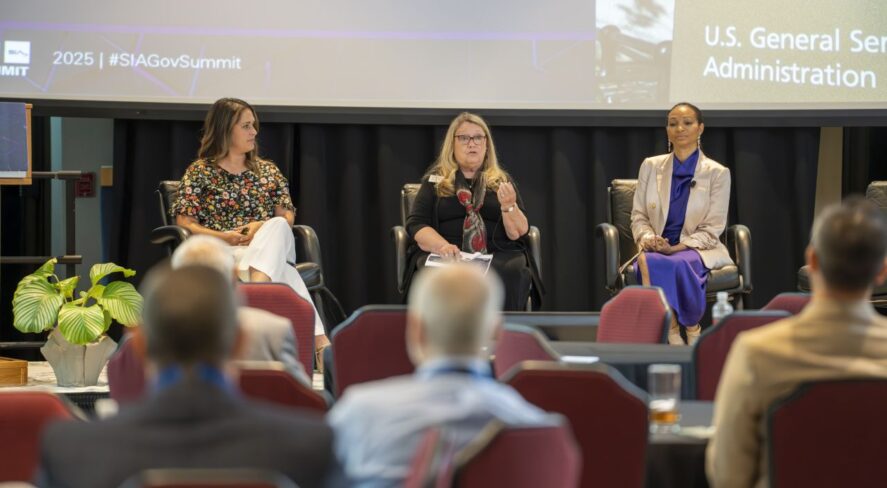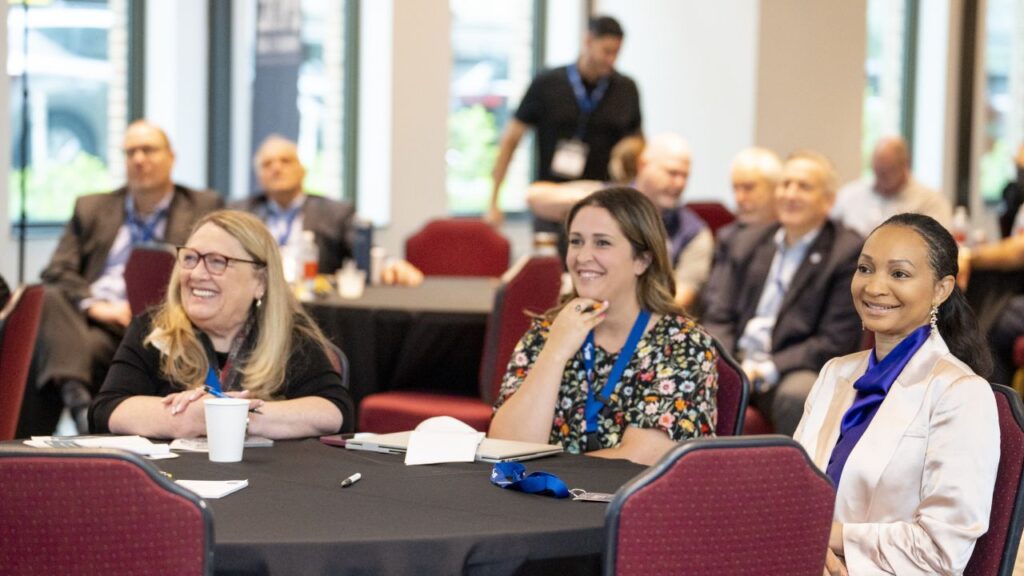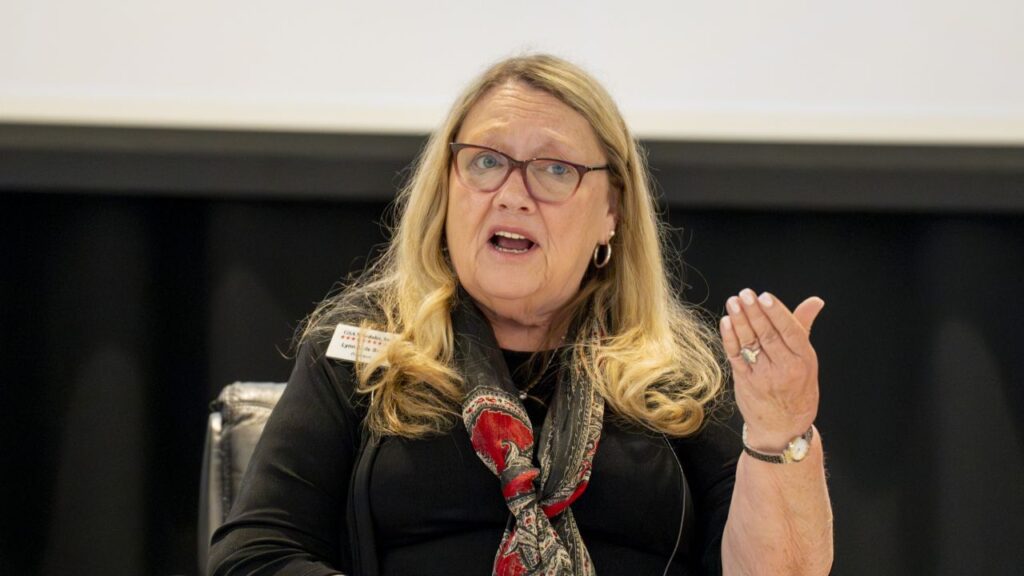What’s New in GSA Contracting in 2025: Insights From SIA GovSummit

Experts from GSA Schedules Inc. and Commodore Consulting shared the latest on the GSA Federal Acquisition Regulation Multiple Award Schedule program, the impact of tariffs and legislative developments and more at SIA GovSummit.
Does your company do business with the federal government? At SIA GovSummit 2025 – the nation’s premier government security conference, presented by the Security Industry Association (SIA) and held May 20-21 in Washington, D.C. – a panel of experts in federal contracts shared updates on the General Services Administration (GSA) schedule program, the tariff and legislative landscape and other considerations security businesses need to know.
Attendees enjoyed a dynamic, informative presentation from Shene’ Commodore, CEO of Commodore Consulting; Lynn de Séve, president of GSA Schedules Inc.; and Gabriella Moraniec, contracts manager at GSA Schedules Inc. Key topics and takeaways covered include:

TDR as an Alternative to MFC
The panelists discussed the pilot of transactional data reporting, an optional program for GSA Multiple Award Schedule (MAS) contract holders. Under the legacy system, GSA has generally required that GSA contracts receive at least the same discount GSA Schedule holders provide to the commercial customer that receives the greatest discount – “most favored customer (MFC)” pricing. Under TDR, contractors will no longer be subject to the requirements for commercial sales practice (CSP) disclosures and the Price Reduction Clause (PRC) basis of award monitoring. TDR Contract holders will report on transactional sales data instead of tracking most favored customer (MFC) pricing. Contractors have long considered this the most burdensome aspect of managing the GSA Schedules program. The benefits of this option include a reduced compliance burden, increased pricing flexibility and a more streamlined contract administration process. de Séve emphasized that this is the most significant change to the GSA Schedule program in two decades.
Companies who participate in TDR must report transactional-level data. Commodore pointed out that once a contract holder accepts TDR for one category, they have to use it for their other categories as well, so it is important to keep that in mind when determining which option is appropriate.

New FAS Catalog Platform
The FAS Catalog Platform (FCP) is a new system replacing the Schedule Input System (SIP) in an effort to simplify and streamline how contractors manage their product and service catalogs. The system features an improved interface for uploading catalog data, automated validations and real-time error feedback and integration with the GSA Advantage online shopping and ordering system.
The new FCP is a web-based application that replaces the SIP desktop software and will allow authorized negotiators to access FCP from any time and location and reduces the risk of data loss because it saves users’ information and stores it in the cloud as they work. Moraniec pointed out that since the system is new, it has some bugs, and GSA Schedules Inc. is working with the agency to work out any issues and improve the platform. More information about the platform and key transition timelines and details can be found here.

GSA Rightsizing and Solicitation Changes
In March, the GSA announced a new rightsizing initiative to improve the effectiveness of the MAS program by “allowing contracts that fail to meet sales thresholds to expire, addressing contractor noncompliance, reducing redundancies with other procurement channels and eliminating low-demand items that fail to deliver meaningful procurement benefits.”
Additionally, the administration announced major changes to the MAS Refresh 26 that include retiring 32 special item numbers (SINs), which may impact which SINs security services fall under. The panelists recommended monitoring GSA Interact to stay up to date with the latest changes to the MAS solicitation.
Under the new initiative, justification is needed for adding non-awarded or emerging technology categories and when proposing new labor categories. Required elements include market research data, price reasonableness justification, functional job descriptions and commercial sales practices. Commodore suggested that contractors, whenever conducting negotiations, consider and discuss whether prices have been adjusted for the current market conditions.

FAS Overhaul and GSA Meeting
On May 28, the GSA held a webinar with over 8,000 participants to engage industry stakeholders on a major initiative to overhaul the Federal Acquisition Regulation (FAR). Senior officials discussed Executive Orders 14240 and 14275, highlighting efforts to consolidate contracting, streamline federal procurement, eliminate unnecessary regulations and enhance value for taxpayers. The webinar topics addressed included FAR modernization efforts, input from contractors and industry groups, possible regulatory and reporting changes, digital transformation across the acquisition life cycle, contract consolidation, FAR deviations and practitioner tools available through GSA’s website, enhancements provided by Acquisition.gov and more. GSA officials urged the participants to visit Acquisition.gov and sign up to receive messages on the revisions and to provide important feedback. View key takeaways here.

How the Security Industry Can Get Involved
Commodore, de Séve and Moraniec recommend that security industry companies doing business with the federal government:
- Stay informed by subscribing to GSA’s newsletters
- Review contracts to ensure compliance with the latest changes
- Engage early with FAS on tech and labor additions
- Share feedback and participate in webinars and meetings like the recent FAR overhaul webinar
GovSummit 2025 was supported by our generous sponsors (ADI, Airship, Allegion, Allied Telesis, AMAG Technology, ASSA ABLOY Opening Solutions, Axis Communications, Corning Optical Communications, digitronics, dormakaba, Echodyne, Genetec, Gibraltar, Global Grab, GSA Schedules Inc., Hanwha Vision, Hexagon, HID, Honeywell, IDEMIA Public Safety, Johnson Controls, M.C. Dean, Polytron Systems Integration, the U.S. Department of Homeland Security’s Science and Technology Directorate, Security Information Systems, Verkada and Wesco) as well as media partners Security Business, SecurityInfoWatch, Security Systems News and Security Technology Executive. Thank you for your support!
Learn more about SIA’s advocacy and government relations resources and activities here.
